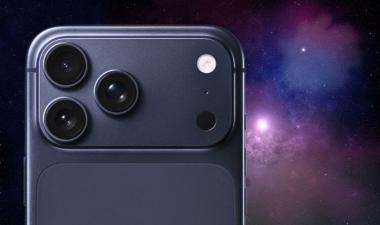T1-2024 Emerging and Embedded Memory Briefing
Author: Jeongdong Choe
Eventually, will emerging memory technologies and devices be the heroes of the future AI Era? Due to the recently ever-increasing AI and big data demands, higher-performance and higher-reliability memory devices such as STT-MRAM, PCRAM, and ReRAM are becoming more attractive to the industry. Emerging and Embedded memory devices are keeping up with AI-accelerated solutions by evolving with the cell and CMOS scaling and new storage layer materials to replace eNOR Flash and eDRAM-based cache memory.
TechInsights just released the Emerging and Embedded Memory Briefing for T1-2024. In the briefing, we reviewed the recent progress of emerging non-volatile memories (NVM), including technology trends, comparisons, challenges, and opportunities of emerging NVM devices such as STT-MRAM, PCRAM, ReRAM/CBRAM, and FeRAM for storage-class memories, embedded NVMs, and near/in-memory computing applications.
Some of the key takeaways are:
- New emerging and embedded memory analysis results on Renesas microcontroller IC and NXP SN300 NFC devices with TSMC 28 nm eFLASH technology, NXP SN200 NFC chip with GlobalFoundries 40 nm eFLASH, and Sony CXD5610 GPS/GNSS Receiver IC with GlobalFoundries 22 nm FDX SOI embedded STT-MRAM technology
- Newly founded emerging/embedded memory products from the market, including Fujitsu 12 Mb embedded ReRAM, Avalanche/UMC 512 Mb 22 nm STT MRAM, STM/TSMC 40 nm embedded ReRAM, and TSMC 22 nm embedded ReRAM chips
- Current and upcoming products/Technology roadmap updates in Q2 2024
- STMicroelectronics Wireless Charger Receiver STWLC38 embedded ReRAM chip details fabricated from TSMC with their N40 CMOS platform
- Avalanche space-grade High-Performance Dual Quad Serial Persistent SRAM Memory device (P-SRAM) 22 nm STT-MRAM chip details fabricated with the UMC 22 nm CMOS platform
- Fujitsu 40 nm embedded ReRAM chip with an SPI interface and 1.6V to 3.6V operating voltage
- STT-MRAM storage layers and materials trend, comparisons, and challenges from TSMC, GlobalFoundries, Samsung, and UMC
Up to date, the major emerging memory technologies scaled down to 40 nm through 22/20 nm technology nodes, only except FeRAM which still keeps 130 nm CMOS platforms. STT-MRAM and ReRAM devices are more actively, continuously, and successfully developed and commercialized than other memory types. Automotive, AI, and IoT applications are among the growth drivers. The Processing in Memory (PIM) or Accelerator in Memory (AiM) applications will be placed between the L4 cache and HBM or DRAM products, while Compute Express Link (CXL) Memories will be placed onto the higher-speed SCM. Near data processing (NDP) and In-storage processing (ISP) applications demand SCM emerging memory, too.
Don't miss out on this informative briefing for further insights.










